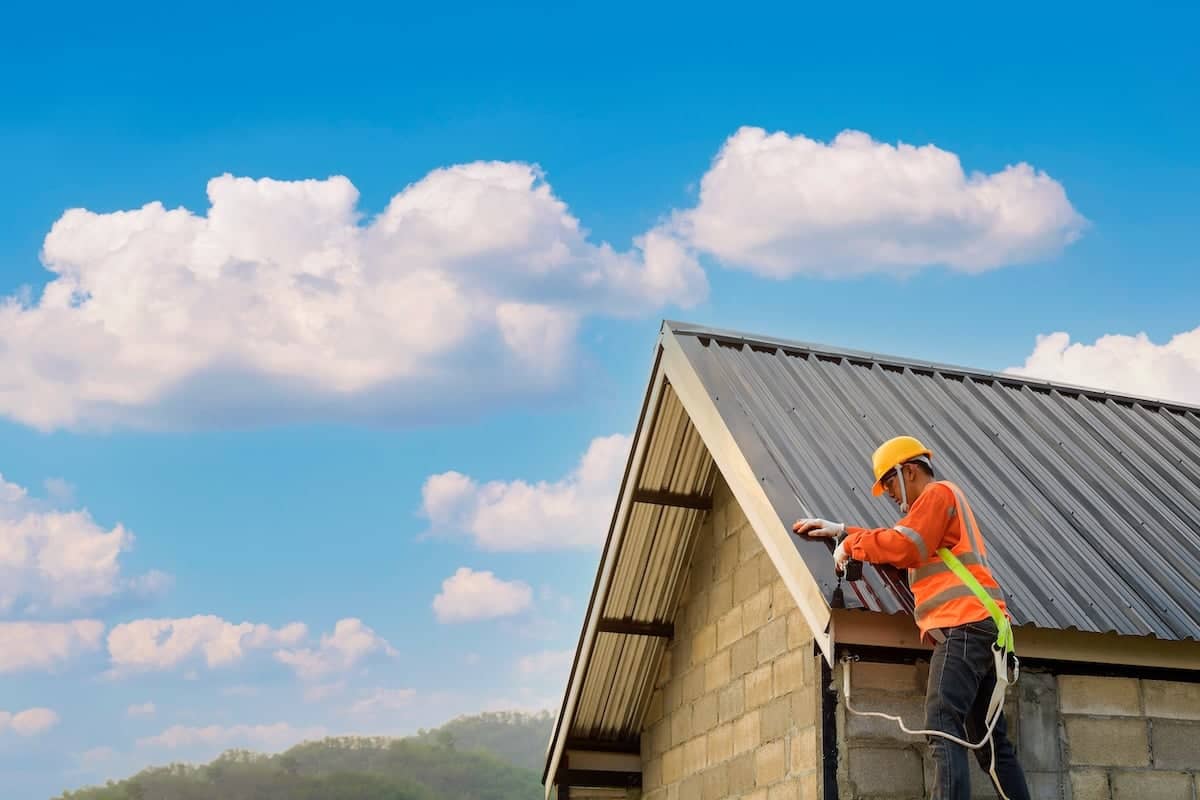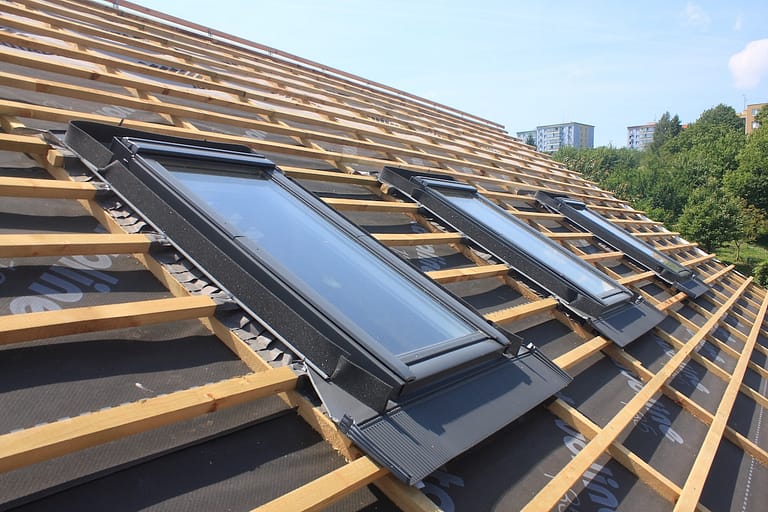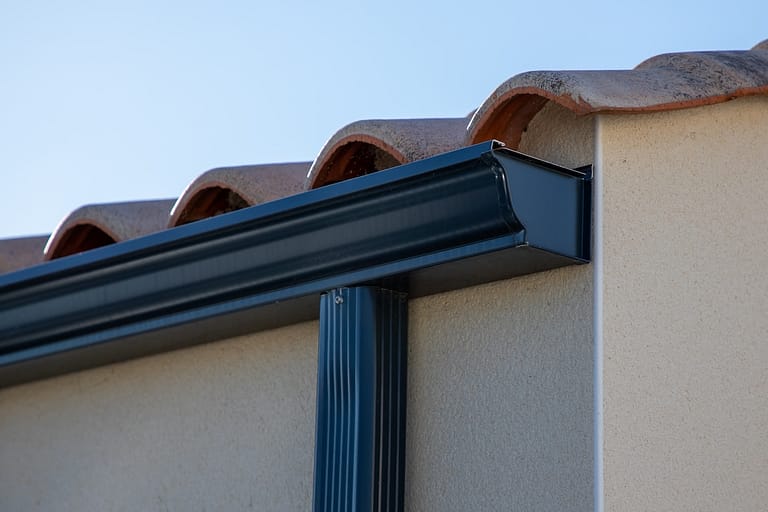Metal roof repair is one of the most important services a homeowner may need as their roof ages or suffers damage from the elements. Known for their durability and longevity, metal roofs are a popular choice, but like any roofing system, they can still experience issues over time. If your metal roof shows signs of wear, it’s essential to understand the causes of damage, the types of materials involved, and what to expect during the repair process.
In this blog, we’ll cover:
- Common causes of metal roof damage
- Materials used in metal roof repair
- When to call in a professional for service
Whether you’re dealing with a minor leak or widespread corrosion, knowing what to look for can help you stay ahead of larger, costlier problems.
⛈️ Common Causes of Metal Roof Damage
Metal roofs are strong, but not immune to wear and tear. Understanding the sources of damage can help you address issues before they become serious.
Weather-Related Damage
Weather is one of the most common causes of roofing problems. Over time, exposure to different elements can compromise even high-quality metal systems.
- Heavy wind can loosen panels or fasteners, especially if they were not properly installed.
- Hail impact can cause dents or surface damage, weakening the structural integrity of the roof.
- Snow and ice buildup can stress seams and flashing, leading to leaks once the snow melts.
Improper Installation
Incorrect installation is another key factor in early roof failure. Metal roof systems must be installed with precision to avoid performance problems.
- Panels that are misaligned may allow water intrusion.
- Poor fastening techniques can lead to lifting or separation during storms.
- Skipping underlayment or using the wrong type can compromise insulation and water resistance.
Aging and Natural Wear
No material lasts forever. Even a properly installed and well-maintained metal roof will eventually need some repair.
- Oxidation and rust can occur if coatings wear off or edges are exposed.
- Sealants used at seams and joints can deteriorate with UV exposure.
- Movement from temperature changes may stress connection points, causing them to loosen over time.
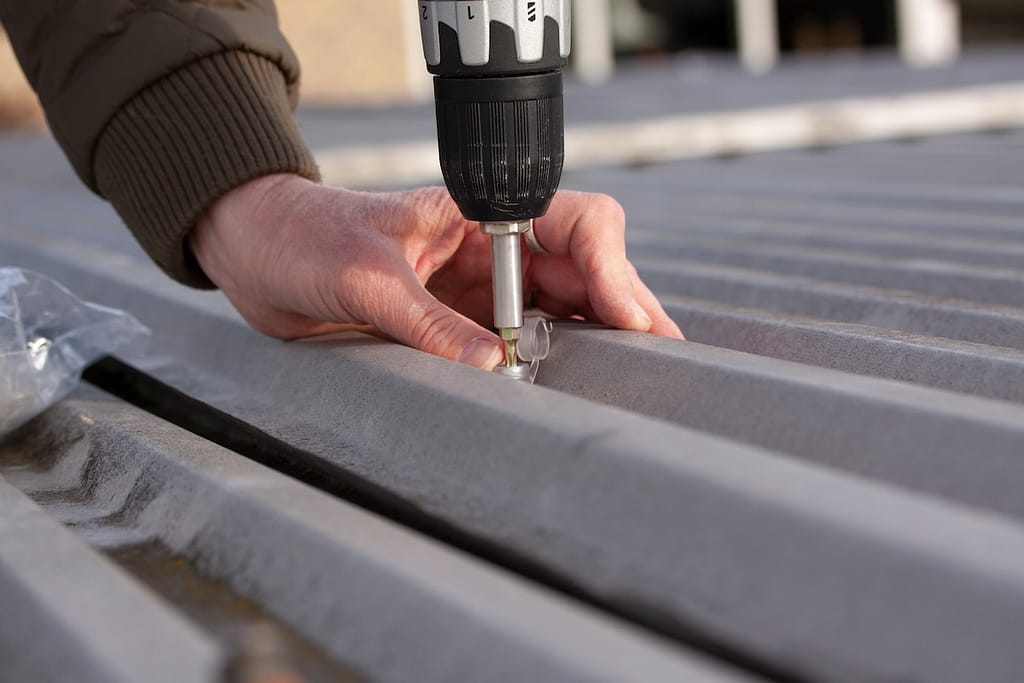
💪 Materials Commonly Used in Metal Roof Repair
Metal roofs come in several different types and materials, each with unique repair requirements. The materials used in repairs often need to match the original roof type to maintain integrity and appearance.
Galvanized Steel
Galvanized steel is one of the most common roofing materials due to its strength and rust resistance. It is coated with a layer of zinc to protect against corrosion.
- Can be patched using compatible galvanized steel sheets
- Requires rust-inhibiting primer before recoating
- Fasteners should be replaced with rust-resistant options if degraded
Aluminum
Lightweight and corrosion-resistant, aluminum roofs are popular in coastal areas. Aluminum repairs must be carefully executed due to the softer nature of the metal.
- Compatible sealants are required for patching
- Galvanic corrosion must be avoided by using aluminum-based repair pieces
- Coating and paint must be matched to preserve aesthetics
Copper and Zinc
These premium roofing materials require specialized repair methods and tools due to their reactive properties and aging characteristics.
- Must use matching metal for any patches or seam repairs
- Soldering may be needed to secure joints rather than relying on adhesive or mechanical fasteners
- Surface patina should be preserved during any cleaning or coating process
⚠️ Signs You Need Metal Roof Repair
Not all damage is immediately visible. Knowing the signs of potential issues can help you act before minor problems lead to serious damage.
Leaks and Stains
Water spots on ceilings or walls can be a sign that your roof is no longer watertight. While metal is highly resistant to water, damage to seams or flashing can allow moisture to seep in.
- Interior water stains, especially after rain
- Damp attic insulation or musty odors
- Visible rust or corrosion at joints or valleys
Warped or Loose Panels
Metal roof panels that appear lifted or buckled may be experiencing thermal expansion issues or have loose fasteners. These conditions can lead to water penetration or further detachment in high winds.
Fastener Issues
Over time, the screws or nails securing metal panels may work loose. This can cause roof sections to rattle, allow leaks, or blow off entirely during storms.
- Missing or loose fasteners around the roofline
- Exposed screw heads with cracked or missing washers
- Nail pops visible from ground level
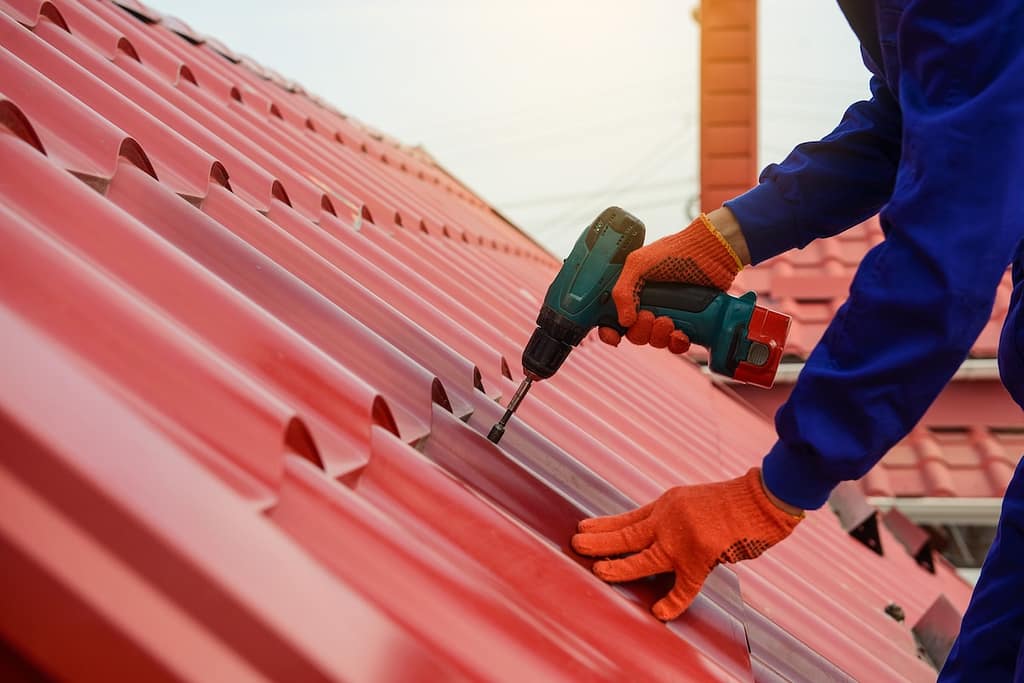
✅ Steps in a Metal Roof Repair Project
Metal roof repairs should follow a systematic process to ensure long-term durability and match the existing materials.
1. Inspection and Diagnosis
The first step in any repair project is a comprehensive inspection.
- Identify source and extent of damage
- Assess underlying structure for moisture or rot
- Determine appropriate repair materials and methods
2. Preparation of Repair Area
Proper prep work helps ensure successful bonding or fastening.
- Clean the surface of dirt, rust, and debris
- Remove old sealants or coatings
- Cut and shape replacement panels or patches
3. Installation of Repairs
This step varies based on the type of damage being repaired.
- Fasten replacement panels using screws with sealing washers
- Apply seam tape or sealant as needed
- Ensure panels are aligned properly for consistent drainage
4. Coating and Finishing
To match aesthetics and extend roof life, finishing touches are crucial.
- Apply paint or coating to match existing roof
- Reseal seams with high-grade metal-compatible sealant
- Re-inspect the repaired area for leaks or missed steps
💡 Preventative Tips to Avoid Future Repairs
The best way to minimize repairs is through proactive maintenance. Simple actions taken throughout the year can protect your investment.
Regular Roof Inspections
Schedule inspections at least twice a year and after any major storm event. Professional roofers can identify issues early and make minor repairs on the spot.
Keep the Roof Clean
Leaves, branches, and debris can trap moisture or clog drainage systems. Routine cleaning helps prevent water backup and corrosion.
Maintain Sealants and Coatings
UV exposure and temperature changes can degrade protective layers. Touch up areas where coatings have worn or sealant has cracked to prevent rust.
Monitor for Pests
Small animals and insects can create openings or nest under loose panels. Address infestations quickly to avoid long-term damage.
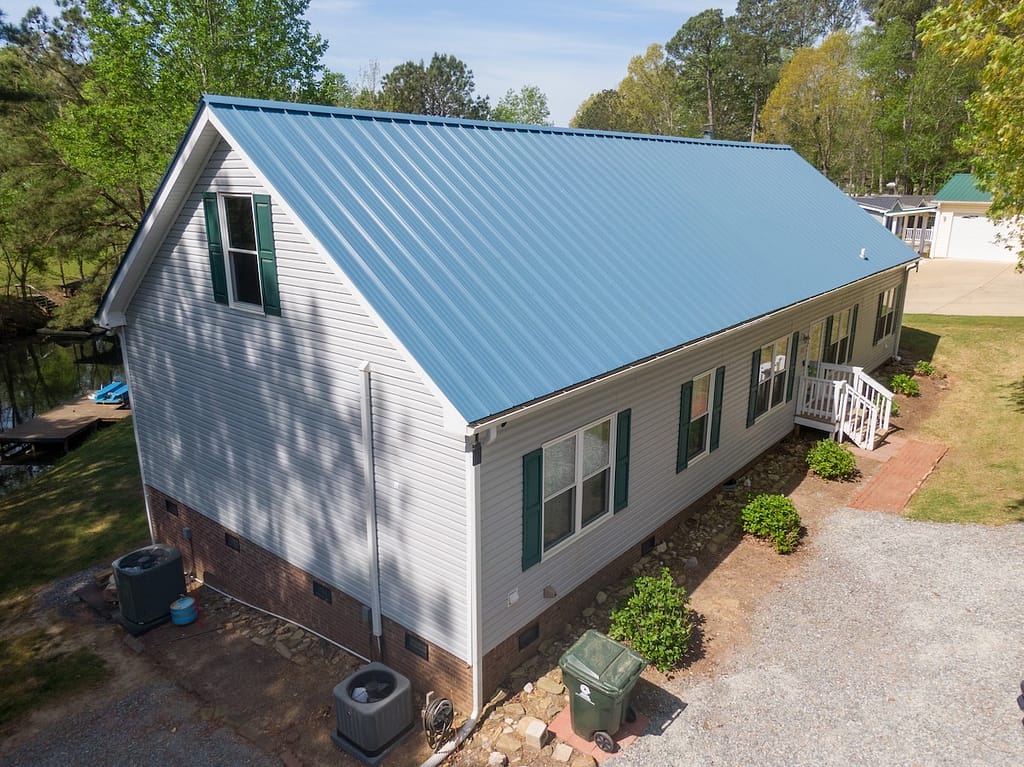
⭐️ Why O’Donnell Roofing Co. is the Right Choice
For over 100 years, O’Donnell Roofing Co. has served homeowners with expert roofing solutions backed by craftsmanship, transparency, and trust. When it comes to metal roof repair, our experienced team understands the unique challenges and techniques involved in working with various metal systems.
- We use only high-quality, compatible materials for each repair
- Our team is trained in both modern and traditional roofing methods
- We prioritize safety, cleanliness, and communication throughout the project
No matter the size of the job, your roof deserves the attention of skilled professionals who take pride in their work. At O’Donnell Roofing Co., we’re not just fixing roofs—we’re helping you protect your home and family.
Ready to repair your metal roof? Contact O’Donnell Roofing Co. today and see why homeowners have trusted us for over a century.
